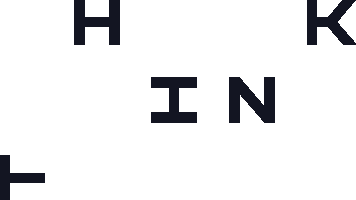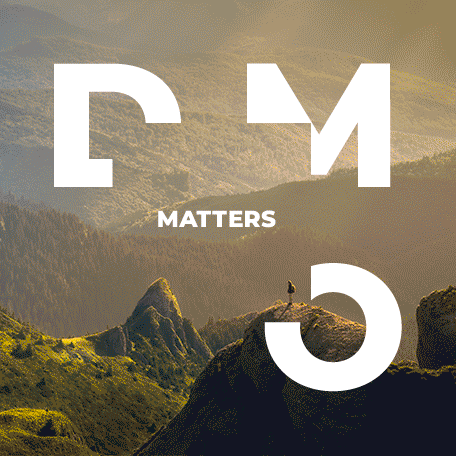“Nature is everything here. But just as important are the people, our teachers, our residents and the way we come together to protect what we love. That’s what community-positive tourism means to us.” — Brett Stawar
Tucked along the Texas Gulf Coast, Port Aransas is more than a beach town. It’s a tight-knit community rooted in tradition, surrounded by fragile ecosystems, and powered by a deep sense of purpose. Here, the tourism industry isn’t just fueling the local economy, it’s making a tangible difference in the lives of schoolteachers.
Originally a fishing village, Port Aransas has grown into a place where multigenerational families gather for beach time, birdwatching, and fresh seafood. “Everything we do has a community-first focus,” shares Brett Stawar, President and CEO of the Port Aransas Tourism Bureau and Chamber of Commerce in this episode of Travel Beyond with host David Archer. “We want to make sure that what we’re doing keeps our residents in mind.”
Port Aransas sits on a barrier island, a narrow, low-lying strip of land that acts as the coastline’s first line of defence against storms and rising seas. This geography makes it especially vulnerable to erosion, hurricanes, and other climate-related threats. The island is home to endangered Kemp’s Ridley Sea Turtles and serves as a critical winter habitat for the rare Whooping Crane. Facing increased risks from hurricanes, ongoing tanker traffic, and the possibility of new desalination projects nearby, locals know their environment needs constant care. And they’re responding with action. The tourism strategy here is something they call “community-positive tourism”. It’s about ensuring that visitor spending supports both people and nature.
One powerful and truly unique example of community-impact is the Marlin Legacy Foundation, which channels up to $500,000 each year from tourism-related businesses and short-term rentals into local teacher stipends. In a state where public education funding often falls short, this community-led program is helping Port Aransas retain and support the educators who hold it all together.
“The teachers… they feel so appreciated by our community,” says Stawar. “This makes a world of difference for them to feel welcomed and needed.”
Another way tourism dollars support local education is through scholarships. One of the most beloved community traditions in Port Aransas is the annual Texas SandFest, the largest sand sculpture competition in the United States that draws visitors from across the region. But beyond the towering sand castles and creative builds, the event serves a deeper purpose: the majority of its proceeds go directly toward student scholarships. With graduating classes of around 40 to 45 students, this small town regularly distributes up to half a million dollars in local scholarship funding each year. This is another unique example of tourism dollars directly shaping young futures.
Alongside many other destinations in the Destination Think Collective, Port Aransas Tourism Bureau is teaching visitors how to care for nature through their actions. One initiative is the Respect Our Island Home campaign. When the town saw a surge in visitation after the onset of the pandemic, the campaign provided a gentle-but-clear way to communicate with travellers about respectful behaviour. Meet Flynn the sea turtle, a curious, animated character who helps deliver simple messages about trash, parking, and shared spaces. Today, visitors are invited to join cleanups, take part in science events, or just enjoy the beach while giving back a little.
“Nature is everything here,” Stawar says. “And we know we have to take care of it.”
With plans underway for a Regenerative Tourism Symposium in fall 2025, Port Aransas is showing how a small destination can lead with values, protect what matters, and welcome visitors into the story.
In this episode, you’ll also learn:
- How tourism contributes up to $500,000 annually toward teacher stipends.
- Why the Gulf Coast is an ecologically sensitive area.
- Why pressures on the community led to the creation of the Respect Our Island Home campaign.
- How animated characters are delivering messages of respect.
- How visitors are invited to help care for Port Aransas.
Subscribe to Travel Beyond through Apple Podcasts, Spotify, or your favourite podcast player.
Show notes
→ Marine Science Institute
A University of Texas at Austin research hub for Gulf Coast ecosystems.
→ Marlin Legacy Foundation
Supporting Port Aransas teachers with tourism dollars.
→ Respect Our Island Home
Learn about Flynn and visitor education efforts.
→ Flynn | Respect Our Island Home Mascot
Meet Flynn and his Ocean Squad.
→ Whooping Crane Festival
Celebrating conservation and migratory birds.
Episode transcript
Brett Stawar: The teachers are seeing anywhere from $2,500 to $5,000 stipends, in addition to special activities that we can do to support them. It’s a game changer for them. They feel so appreciated by our community. They know that they’re loved, and this makes a world of difference for them to really feel a part and feel welcomed by our community and needed.
David Archer: Welcome back to Travel Beyond. I’m David Archer from Destination Think, recording from Haida Gwaii, the territory of the Haida Nation off the north coast of British Columbia in Canada. On this show, we look at travel’s role in making a better world, and we highlight leading destinations and changemakers.
Our guests are taking local action that the world can learn from. They’re helping to regenerate ecosystems, communities, and economies, and they’re often making positive change happen from the bottom up. Many of the voices that we’ve highlighted are part of the Destination Think Collective, a peer group of more than 20 ambitious, forward-thinking destinations working towards a better future for travel and the planet.
I like visiting new places, and I’m sure you do too. Today we’re heading somewhere this podcast has never gone before: the town of Port Aransas on the Gulf Coast of Texas, where they are working towards becoming the premier sustainable tourism destination on the Gulf Coast. It’s all part of a strategy led by the Port Aransas Tourism Bureau that focuses on what they call community-positive tourism.
We’re going to find out what that means by zooming in on some inspiring examples of care for the community and the environment from the tourism industry. This place celebrates nature. It’s a great place for birdwatching and is the site of a whooping crane festival that has been running for 30 years.
The whooping crane is an endangered species that is now thankfully in recovery, thanks in part to conservation efforts happening here. On this show, we’ve been hearing a lot about how tourism funds are being used in creative and unexpected ways. See our last episode about the mammoth doughnut and wildfire protection for one example, or our story from Bend, Oregon, which showed how the local bed tax funds the fire department and other core municipal services and some sustainability-minded experiences.
Port Aransas caught our attention with a heartwarming example that I’ve never seen anywhere else, and which my guest says is probably unique within the United States. Throughout the year, the tourism industry in Port Aransas gathers funds to give school teachers an annual stipend. Some of the money comes from visitors who opt in when they pay for things like a vacation rental, and some of it comes directly from businesses.
Each year they raise up to $500,000 to spread across the community this way. My guest today is Brett Stawar from Port Aransas Tourism Bureau, and he’ll tell us all about this. He’ll also describe some of the ways tourism is working to encourage respectful travel, in part through some animated characters.
He’ll tell us about some volunteer opportunities and some successes the community has had in protecting endangered species like the whooping crane. Here we go.
Brett Stawar: My name is Brett Stawar. I’m the president and CEO of the Port Aransas Tourism Bureau and Chamber of Commerce here in Port Aransas, Texas. For those of you who don’t know where that is located in Texas, we’re pretty far south. If you’re familiar with San Antonio, keep driving two and a half hours south and you’ll hit us. We’re pretty much on the tip. We’re near South Padre for those spring break folks who might remember that from years ago, but we are about 75 miles north on that as the Gulf goes.
David Archer: Great. You’re in a unique sort of environment or geography. Can you talk about that a little bit?
Brett Stawar: Yes. We are definitely a barrier island in and of itself. The geography of our location is unique in terms of normal, traditional United States things. We’re far south, right? So a lot of the production chains end with big cities like San Antonio and Austin and Houston, all of which are within three or four hours of here. We find ourselves sometimes dealing and grappling with those needs that we have on the further south end of Texas.
David Archer: What makes this place a little bit different from others along the Gulf Coast, like other destinations?
Brett Stawar: Our destination is steeped in real fishing history. We were a small fishing village for many, many years. In the early 1900s, we were called Tarpon, Texas, after the fish, the tarpon. We definitely have grown our traditions from fishing generation after generation. Folks have come down to Port Aransas to make this their getaway from life and their destination and their time on the beach. So it’s a great fishing village that now has turned into a great destination with a lot of amenities that weren’t here a hundred years ago, 40 years ago, but continue to build up around really family tradition. Fishing is still a big part of that.
Our destination is also filled with great beach houses and cottages and not as many hotels. So where you come down here, it’s going to be larger gatherings, multi-generational families, houses that can fit 20 to 30 people, and different condos if it’s just the individual traveller coming down. Different condos can help them. But yes, it’s definitely a different community-first vibe where you feel like you are walking into a beach town.
David Archer: Tell me a little more about the community. Can you describe some of the values that you’d say the community stands for?
Brett Stawar: We’ve been working hand in hand with our community on what we do care about here in Port Aransas. It is first and foremost a community. Everything we’re going to do is a community-first focus. We really want to make sure what we’re doing now and into the future keeps our residents in mind.
We do respect that it was tradition that brought all of us here at some point. Not many people are seventh-generation families who live in Port Aransas. We all come here for the beauty, for the feel and the culture of the place, and the tradition that has brought us back each year and eventually to living here.
The other things, of course, that we do care about are quality of life. We’re able to leverage a lot of tourism’s benefits to enhance our quality of life, to have those great restaurants we talk about having, the shopping alternatives, to have the roads and the infrastructure, trails, boardwalks, and piers that wouldn’t be here without tourism.
And then, of course, we do know that people come to the beach to have fun and a good time, so we like to let loose and let people have a good time. But while you’re here, respecting those of us that live here, the marine life, the people, and everything.
David Archer: And I was reading a little about marine life. As a community member, do you have a sense of why this is a sensitive place ecologically?
Brett Stawar: There are a number of species here. The Kemp’s Ridley sea turtle is here and found on the banks of the bay, as well as on the shore along the jetties that we have to protect our island from erosion. So we have a lot of those that are rare, endangered.
The other big piece that we have is the winter migration of birding, but more importantly, the whooping crane migration, which is a rare species. It is the largest waterfowl bird out there. It has really been close to extinction, down in the tens to twenties of birds left, now we have about 700 of them left. So it’s still a huge conservation effort, but we put on a lot of education sessions around their migration time here in February.
In fact, we’re about to celebrate our 30th Whooping Crane Fest in the coming year. Again, we are a birding community, so we have a lot of birding trails, and we do compete in the Big Sit and all of the things that really help make this a special place. So really when it comes down to it, it’s the beaches, it’s fishing, and it’s the birds here in Port Aransas.
David Archer: How would you describe the community’s ambition for sustainability?
Brett Stawar: We are hungry for it. We realize that the impact of human nature can impact a lot of that. We are on a huge ship channel as well. So one of the challenges we have facing us is that the Port of Corpus Christi is through our channel and down through the bay. So we have these massive tankers coming through, what they’re called VLCCs. They’re bringing in any sort of product to and from the US, but using that gateway as part of it. That gateway also happens to be the place where we fish. Marine life thrives.
Everything from, we’ve been focusing on oyster cultivation to now—our redfish is very popular here. And as you go out further into the deep sea, you’re hitting snapper and things like that. In order for us to kind of maintain that, and as that industry continues to grow, we are watching that.
One of the things hitting Texas right now is drought conditions. There is a lot of talk of desalination plants and putting those to support the growing Texas economy. We’re definitely as a community keeping a close eye on those things and making sure of the input and output, and working with our scientists and research partners, which we are blessed to have right here in our backyard from the University of Texas A&M, as well as the University of Texas itself. So Texas A&M and the University of Texas both have research facilities within a stone’s throw of Port Aransas.
David Archer: Are there any other notable climate challenges that you’d like to mention that are present in Port Aransas?
Brett Stawar: We continue to watch; we monitor water levels. It hasn’t been a huge thing lately. Of course, the influx of hurricanes is something we watch a lot. And right now we’re on a pattern of increased turbulent weather that does threaten our safety as well as the sustainability of an island like this.
We haven’t been hit directly with one for some time since 2017. A Category 4 came through last year though, in the middle of summer, there was one headed straight for us that veered north just at the last minute to hit the Houston area and Galveston. We’re certainly not off of the threat. It comes back every year, and we watch as we enter hurricane season, watch the models of that play out.
David Archer: Let’s turn to visitors for a little bit. What are some of the things that draw people to visit if sustainability is an important topic to them?
Brett Stawar: Some of the things people like to do here—it is a native beach with a lot of organic dunes and just natural beauty. So some people may be coming here more to see those lifestyles. We have the Marine Science Institute here that is full display of what sea life is here in the Texas Gulf and what different sustainability things we’re doing as a country, as a state, and as a community to improve that.
I think your sustainable traveller loves to come down here because it feels like an organic community that lives and thrives through living on a barrier island. It’s a place where they know it’s real, it’s authentic. Nothing is man-made here. We didn’t have to spend millions of dollars to get it to a point of having an ecotourism system. We are an ecotourism system. Everything we do, our wetlands, our trails, immediately are resilient and come back to nature. Even after storms or after, let’s say, there are spills in the Gulf, nature is very resilient and comes back.
David Archer: What’s one thing that you hope visitors can learn from a trip?
Brett Stawar: I think one of the great things visitors take away each time they’re in Port Aransas is the respect for one another. That is a core value of this community. They leave feeling very aware and appreciative of the locals that are here. We also have the respect for maybe Mother Nature.
David Archer: That’s great. Along with the podcast and these interviews, we’ve been talking about ways that travellers can be part of positive change as well, and that definitely fits in with that respect idea. And so I wanted to talk about some of the good examples of community-positive or sustainable tourism. And one that I had come across was a programme that’s directing funds from tourism towards teachers. Can you tell me a bit about that?
Brett Stawar: In Port Aransas, tourism is our number one economy. There’s not a whole lot more going on other than our exchange of dollars with travellers that come here. Like I said, our population is about 3,500. So the value and the importance of travel and tourism is incredible to our community.
That being said, some of the state funding models for things like roads and education do become challenging because we are that kind of remote area, very rural area on a barrier island. Also not part of a major metropolitan area that many places get. Maybe more attention as we are further south on the radar. So we’ve been forced sometimes to come up with creative solutions.
We have a great community that gives back to all of our students. In fact, our graduating classes typically get somewhere near half a million dollars in scholarships from local businesses. They go back to our students, and you’re talking 40—average class size is 40 to 45 students. So those kids are sharing a wealth of money to go on their continuing education career. So that’s something that this community’s done for decades and continues to grow.
In fact, one of our signature events, the Texas SandFest, gives the majority of all of their funding back to student scholarships. We also have an education foundation that is working hard to give back to teacher resources and things. Again, all raised through the backs of tourism.
What has happened recently—some of our short-term rental companies, we’ve seen an explosion of short-term rentals as we recovered from the hurricane, as well as just natural development of this area. And as we also hit COVID at the perfect time when all of these were onboarding, an explosion of short-term rentals came on board.
And our public education in Texas has been challenged with funding. Our teachers are still operating on the same basic allotment they had before COVID. So there have not been increases to public education to really support our student body and our teachers. So our local businesses have had to step up to fill the gap.
In Texas, there’s a program called Recapture, where only a certain percentage of our property taxes can actually stay and go back to our students. So, being a very rich property district, they have to give back most of that money to the state for their own efforts on education. So therefore, we’re strapped. We have a very small community that doesn’t have the funding sources to teach our children.
Our short-term rental groups all got together and have created the Marlin Legacy—the Marlin is our mascot for the school district—and they created a Marlin Legacy Foundation to really support stipends and additional pay for teachers so that we can keep teachers here, we can attract them here, because it’s not cheap to live in Port Aransas. You’ve got additional insurance concerns with hurricanes, flooding, windstorm that other communities aren’t facing, and the teachers are paid ultimately the same salary.
So the cost of living here is extremely challenging for someone on a teacher’s salary and to really be stymied with public funding. We’ve had to come up with these creative solutions. So our Marlin Legacy Foundation is raising anywhere from, again, $300,000 to $500,000 a year with optional fees that the consumer is opting into or that they’re just taking out of their bottom line and saying, “Here, if we care enough about this community, we are going to give you these dollars to keep our school district alive and educate the children in our community.”
I don’t think it’s happening anywhere else in the US. I’ve certainly been in the DMO space for a long time, and this is one of those projects that has been unique to the challenges we face here on a barrier island in the state of Texas and beyond.
David Archer: Yes. That’s incredible. So it’s up to $500,000 a year coming through tourism, through this foundation.
Brett Stawar: Yes. Short-term rentals and lodging for the most part, exclusively. We have started to expand it a little bit more to where maybe some of the golf cart rental companies—for those who like to rent golf carts when they’re in town—or other retail businesses might want to give some to the cause as well. But teacher funding, teacher salaries are a big issue here, and education is the backbone of our community. Without it, our community-first approach would lose its appeal. So we have to keep our school district, no matter what we do.
David Archer: You mentioned that participation is voluntary. Is that for both businesses and visitors?
Brett Stawar: Yes. Not every business participates. If there’s a fee added on to a room, it’s a click-the-box kind of thing that, “Oh yes, I want to help the Marlin Legacy Foundation.” Or, like I said, the company then finds a way just to pull it out of their own fees that they could easily keep for themselves or use on other things. So we just have such a generous and giving community. We’re a tight-knit community, but we’re welcoming to all people.
David Archer: What impact do you see on the ground as far as how it’s affecting teachers’ lives?
Brett Stawar: Teachers—they swell up. I actually happen to be a school board member as well. I’m a public elected school trustee. But every year we’re able to give the stipends. It’s usually around the holidays where we have closure to a season, a peak season, and the monies are funnelled in. And the teachers are seeing anywhere from $2,500 to $5,000 stipends, in addition to the special activities that we can do to support them. It’s a game changer for them.
They feel so appreciated by our community. They know that they’re loved. So they may choose to live in maybe another community and they commute here, and that commute is not easy sometimes. There’s a ferry, in fact, you have to get on to get to the island on one end. So a lot of the teachers ride a ferry over, and sometimes that wait can be a while. There are struggles that the teachers face to get to come to work, and this makes a world of difference for them to really feel a part and feel welcomed by our community and needed. So we love our teachers, no matter if Port Aransas residents are just coming in from maybe 20 miles away.
David Archer: That’s wonderful. Can we talk about the ways that you’re communicating with visitors? I was reading about the Respect Our Island Home project. Can you tell me a bit about that?
Brett Stawar: The Respect Our Island Home campaign really came out of a public engagement process. So we knew that the locals were getting restless as we rolled off of Harvey, and there was so much new development. The cost of living was skyrocketing. A lot of things were happening. And then layer in COVID on top of that. And then all of a sudden, a lot of places were closed and everybody flocked to the beach. So we were in the prime position to become one of Texas’s premier beaches, and we did.
So we saw mass visitation come down to the beach, enjoy all the luxuries we had, but then at the same time, cramp our lifestyle a little bit. And we noticed that happening more and more, and certainly on all the social media pages and things, we started to notice, “Okay, this is real. We have a problem here.” We felt it too, as living here.
So we immediately convened some workshops. We did some resident sentiment surveys to find out where people were on their feelings towards tourism and towards short-term rentals and what the issues they’re facing. And time and again, it always came back to the core issues, at least in Port Aransas, of overcrowded beaches. Really the trash that people leave on the beach, the disrespect on—these short-term rentals are homes, like I said before, and they don’t have as many parking spaces as people bring cars down.
All of a sudden, our streets are lined with parked cars, or they’re blocking driveways of residents. So you had a lot of chaos kind of going on. So that led to a discussion with our community on what can tourism do to help provide a solution to that. So we really focused a lot on the term “respect” to kind of start communicating with our visitors that this is not okay. We don’t want you coming down and doing those sorts of things, but in a very sensitive way. We didn’t want to be a negative smear campaign towards our visitors because they are the reason we exist. And it would be hard to not have them come back. So we have to work together and live together.
We did so with a campaign that we found centred around the theme of respect. And we developed characters, because who’s going to carry that message? Is it a person? Is it—what is it? And as we did our research, we did some research locally, but then we also did research in our target markets about what sort of person or thing should talk to people about how they should come to Port Aransas and have a great vacation.
Well, we did things from mermaids to different types of—I think pirates and things like that. And we ended up on a sea turtle, of course, a Kemp’s Ridley sea turtle, a fictional character named Flynn. And he was definitely something that was a little bit naive. He’s freshly hatched from the seashore. So he had that ability to ask people questions in a curious way, and still does. So, “Well, why would you do that? Why I can’t drive a golf cart at 1.” He’s a 1-year-old sea turtle. “No, I can’t.”
A lot of those positive reinforcement of education have been developed and message strategies, from everything from trash to reckless golf cart driving and blaring radios on the beach and things like that. That’s kind of where it all developed.
We’ve since then evolved the campaign to continue talking to folks when they come into the market. So as soon as they get on the ferry or they cross the Causeway Bridge, we have advertising that’s going to say, “Welcome to Port Aransas. Here are the things we have going on.” And then we also have the ability to really hone in on that messaging in the market, and then do things in our short-term rentals.
So we have—we develop tool kits that our companies can use to talk to visitors. We have magnets they can put on their refrigerator about respecting our island home on the recyclable trash bags that we give out. There’s logos on that with our friend—Flynn is his name, the Turtle—and he has two new friends now.
So Captain Riley has joined as a dolphin. He’s more of the fun, jovial, dad-like figure. And then we have a Roseate Spoonbill, which is our city bird, a big pink bird like a flamingo, but not. And her name is Dottie. And she talks to people more in a matriarch sense of motherly advice and love. And so the three of them together can really communicate most of the challenging topics that we might come across. So we’re going to continue to evolve the character line. People love Flynn and his friends, Dottie and Captain Riley. So we’ll continue to use that as a way to educate people about the Port Aransas way and how we want people to act when in the market.
David Archer: And there are ways that visitors can participate directly, other than sort of adjusting their day-to-day behaviour? I was reading about some beach cleanups and other activities like that as well.
Brett Stawar: Yes. We have a Flynn’s Beach Squad that is meeting up at least weekly during peak times. We’ll sometimes do it twice a week if demand is there, and that’s meeting at the pier to go do beach cleanups with a family. So we’ll go out there with one of our staff members who will bring the grabbers, the garbage grabbers and the trash bags, and help us kind of go along our beaches. And sometimes it’s not the beach that needs help because people are respectful of that. It might be the streets that are one block over. So we’ll sometimes take them over a block because everything pretty much on this island is going to end up in the water no matter which direction the wind blows. Yes, it’s all going to end there.
We do have these Flynn’s Beach Squad cleanups that we do pretty regularly here in Port Aransas weekly, and then sometimes twice a week during the heavy tourism season. We have a lot of those sorts of activities going on. We’re doing more and more. We just launched an Island Science Day, which is a partnership event that we do with the University of Texas Marine Science Institute. And that is a programme in which we bring all of our collaborative partners together to kind of celebrate the different offerings that they do, as well as do some programming and teaching aboard vessels or with the scientists who are studying at the University of Texas Marine Science Institute and really do a full day of education.
So that’s one that we launched last year during October, and we continue to look forward to programming, expanding that and taking pieces of that into everyday experiences in Port Aransas.
David Archer: That all sounds really positive and productive. What’s one thing that you want travellers to take away from this story?
Brett Stawar: I think many times you don’t think of Port Aransas or of Texas as a beach destination, but Port Aransas—if you’re not from Texas, you may not really even have heard that name before. So I think understanding that deep down in the Gulf, on the barrier island side of Texas, there is a special place that holds so much rich history and love for the Gulf.
It’s unexpected when you first walk into it because you might think of it more like a Miami Beach or some big—anytime somebody says, “Let’s go to the beach,” you may have these different pictures of Hilton Head or Miami Beach or different places. Well, there are small communities like Port Aransas that exist and thrive and are special places to go and become part of the culture when you are there. And then leave with a sense of understanding and pride for having been there. And maybe you’ll someday come back, or maybe you’ll buy a house here someday, move down here. But the love that people have when they leave here—it’s a true affinity that doesn’t leave them for many, many years.
David Archer: Well, it sounds like there are a lot of great things happening, and it’s been inspiring to hear about some of it. So Brett, thanks so much for being a guest today.
Brett Stawar: Thank you.
David Archer: This has been Travel Beyond, presented by Destination Think. And that was Brett Stawar from Port Aransas Tourism Bureau and Chamber of Commerce. For more resources and show notes, visit our website at destinationthink.com.
This episode was hosted, produced, and has theme music composed by David Archer. Sara Raymond de Booy is my co-producer. Amy Bjarnason, Lindsay Payne, and Cory Price provided production support.
And if you like what you hear, please give us a five-star rating on the app of your choice. It helps more people find our show. Thanks so much for listening, and we’ll be back next week.










0 Comments